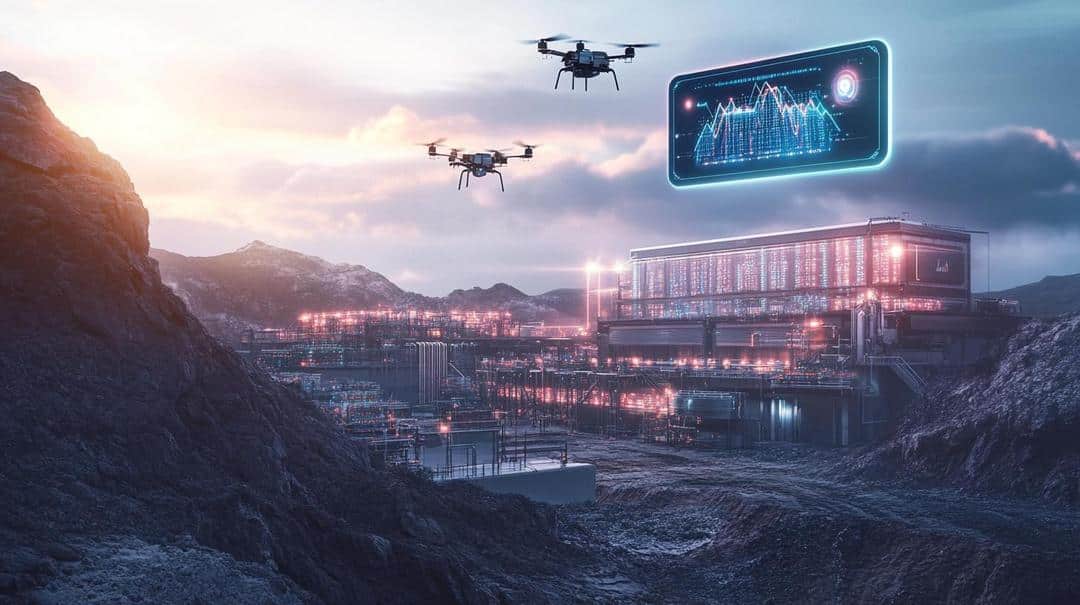The supply chain for these critical minerals remains murkier than your morning coffee! With the US focusing on strengthening its rare earth industry, blockchain—a technology often linked to cryptocurrency—is proving to be the superhero of transparency and efficiency.
Let’s dig in!
What's Inside
What Role Does Blockchain Play in US Rare Earth Supply Chains?
Imagine blockchain as a digital ledger that’s like a shared spreadsheet but one that can’t be changed once an entry is made. Just as a permanent marker writes something you can’t erase, blockchain creates unalterable records of transactions and movements.
Rare earth supply chains are critical lifelines for modern technology. These minerals—like neodymium and dysprosium—are essential components in everything from smartphones to electric vehicle batteries and military equipment. The United States relies heavily on these strategic resources, making their secure and efficient procurement a national priority.
The Transparency Challenge
Traditional rare earth supply chains are notoriously opaque. Companies and governments struggle to track minerals from their point of origin through multiple processing stages. This lack of visibility creates significant risks, including potential illegal mining, environmental violations, and geopolitical dependencies.
Key Challenges in the Current US Rare Earth Supply Chain Framework
China currently dominates the rare earth market, processing approximately 78% of the world’s supply. This concentration creates substantial strategic vulnerabilities for the United States. Domestic mining and processing capabilities remain limited, leaving the US exposed to potential international supply disruptions.
Environmental and Ethical Concerns
The rare earth industry has long battled significant sustainability challenges. Illegal mining practices, potential human rights violations, and substantial environmental damage have plagued the sector. Regulatory oversight remains challenging, with complex international supply networks making comprehensive monitoring difficult.
How Blockchain Solves Rare Earth Supply Chain Bottlenecks
Blockchain technology offers a transformative solution to these intricate challenges. By creating a transparent, immutable record of each mineral’s journey, blockchain provides unprecedented visibility into supply chains.
Tracking and Verification
Every transaction and movement can be recorded cryptographically, ensuring that each rare earth mineral’s origin and processing history can be definitively traced. This means companies can rapidly verify ethical sourcing, confirm environmental compliance, and identify potential bottlenecks or irregularities.
Efficiency and Sustainability
Blockchain streamlines communication between multiple stakeholders. Mining companies, processors, transportation providers, and regulators can access real-time, synchronized information. This reduces administrative overhead, minimizes documentation errors, and accelerates supply chain processes.
Real-World Applications of Blockchain in Rare Earth Supply Chains
Several pioneering organizations are already exploring blockchain’s potential. IBM and Everledger have developed platforms for tracking conflict minerals, demonstrating how this technology can be adapted to rare earth supply chains.
Industry Pilots
Emerging US-based rare earth mining companies are integrating blockchain to enhance their operational transparency. These early adopters are setting new standards for supply chain management, showing how digital technologies can revolutionize traditional industrial processes.
Future Innovations and the Impact of Blockchain on US Rare Earth Supplies
The US government recognizes blockchain’s potential in modernizing critical mineral supply chains. Future innovations will likely integrate blockchain with artificial intelligence and Internet of Things (IoT) technologies, creating highly sophisticated, predictive supply chain management systems.
Technological Convergence
By 2030, blockchain could become a standard requirement for rare earth supply chains. This technological convergence promises more resilient, transparent, and efficient mineral procurement strategies, ultimately supporting national technological and economic independence.
Conclusion
As we push for sustainable, traceable, and efficient supply chains, blockchain stands out as the ultimate game-changer for addressing inefficiencies, bolstering transparency, and ensuring ethical mineral sourcing. By blending cutting-edge technology with industry expertise, the US can reshape its rare earth ecosystem for a more resilient future.
FAQs
What is blockchain, and why is it important for rare earth supply chains?
Blockchain is a decentralized digital ledger technology that records transactions securely and transparently. In rare earth supply chains, it enhances transparency, traceability, and efficiency.
What makes the US rare earth supply chain so complex?
The US relies heavily on imports for rare earth elements, with most processing facilities based in China. This dependency, combined with regulatory, environmental, and logistical challenges, complicates the supply chain.
Are there any successful blockchain implementations in rare earth supply chains?
Yes! Companies like IBM and Everledger have implemented blockchain pilots to improve traceability and ethical sourcing. Mining companies in the US are also exploring blockchain to optimize operations.
How does blockchain support sustainability in rare earth supply chains?
Blockchain tracks carbon emissions and promotes accountability for ethical sourcing, enabling supply chains to meet environmental, social, and governance (ESG) goals.
What are the potential limitations of using blockchain in supply chains?
High implementation costs, the need for stakeholder adoption, and scalability remain key hurdles for blockchain deployment in rare earth supply chains.


Dustin
Driven by a fascination with rare earth elements and their role in powering modern tech and engineering marvels. A true car and tech enthusiast, he loves exploring how these hidden heroes fuel our most exciting innovations.
You Might Also Like…